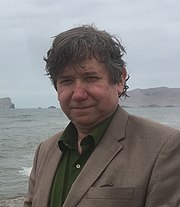Design
Design
Personality
Chart Properties
Your Cross represents the specific theme of your life. This cross embodies your unique potential & the lessons you're here to learn, providing a roadmap to fulfilling your life purpose.
We use the UTC birth time and date to do the calculations required to generate your Human Design chart.
Buy Tokens
Pay as you use, no expiry and no subscription required.Prompt Ideas
Get inspired with some epic prompt ideas.Philip Roth's Biography
American writer, a novelist and educator who taught at Princeton and at Writer’s Workshops. Roth was best known for his outrageous fiction “Goodbye Columbus,” winner of a National Book Award for fiction, and “Portnoy’s Complaint,” 1969.
Roth and his older brother, Sandy, were the kids of Jewish Polish immigrants. Their dad, Herman, was an insurance man who spent the first part of his professional life pounding the pavements of Newark, NJ to get overdue three-cent premiums from clients. With only an eighth-grade education, his dad worked his way into management. He was an opinionated man who ruled the family with an iron fist while Philip’s mom, Bessie was a gentle martyr to his dad’s domestic tyranny. She died in 1981.
After college Roth served in the Army. He was discharged in 1955 and then taught at the University of Chicago while writing “Goodbye, Columbus” which won a National Book Award for fiction and was made into a motion picture. In 1960 he won a Guggenheim grant and went to live in Italy and then England. During the span of his career he scandalized his fellow Jews with his voyeuristic rendering of conventional Jewish mating habits in “Goodbye, Columbus,” then in 1969 with the lurid, uproarious and sexually graphic “Portnoy’s Complaint.” He received critical acclaim for other books but none sold as well as that outrageous best-seller.
He had a brief, tempestuous marriage to Margaret Martinson, a divorcee whom he met when they were both graduate students at the University of Chicago. It ended in a bitter divorce in 1963. In 1976, after a variety of female companions, he met actress Claire Bloom at a party. They lived together and were married in Manhattan on 29 April 1990. She had a daughter, Anna, from her former husband, actor Rod Steiger. They too had a later divorce, in 1994, that was lethal. Bloom’s autobiography, “Leaving a Doll’s House,” 1996 gives an incendiary account of their 18-year relationship, marriage and divorce, portraying him as cold and mean-spirited, “able to make character assessments the way surgeons make incisions.” In his own book, “Deception,” he writes about a philandering novelist married to a tiresome English actress, an example of his penchant for writing thinly veiled portraits of those whom he best knows. Roth’s name was linked with Mia Farrow in early 1997.
When his dad was diagnosed with a terminal tumor pressing on his brain, Roth undertook the day-to-day care of his difficult dad. He kept a journal tracking his dad’s nearly two-year illness which later became a book, “Patrimony: A True Story,” published in January 1991. It tells, in moving detail, about the death of his dad in October 1989 as well as Roth’s own emergency quintuple heart by-pass the previous summer.
He received a Pulitzer Prize for his 1997 novel “American Pastoral,” which featured one of his best-known characters, Nathan Zuckerman, a character in many of Roth’s novels. “The Human Stain” (2000), another Zuckerman novel, was awarded the United Kingdom’s WH Smith Literary Award for the best book of the year. In 2001, in Prague, Roth received the inaugural Franz Kafka Prize.
Roth died at a Manhattan hospital of congestive heart failure on 22 May 2018, aged 85.
Link to Wikipedia biography
Philip Roth
Your Cross represents the specific theme of your life. This cross embodies your unique potential & the lessons you're here to learn, providing a roadmap to fulfilling your life purpose.
We use the UTC birth time and date to do the calculations required to generate your Human Design chart.






